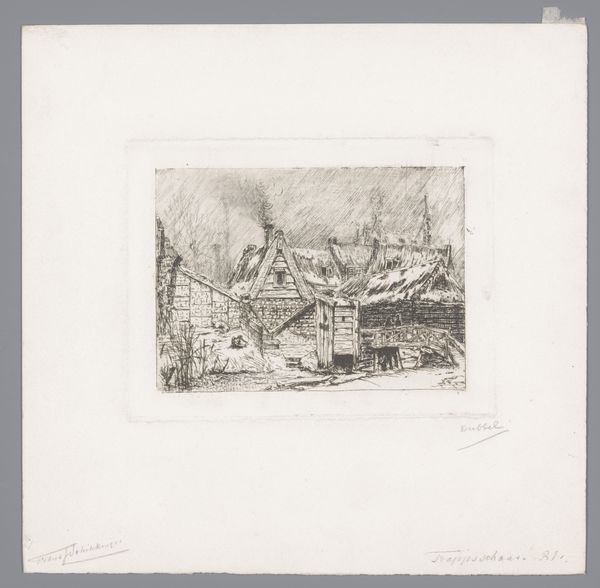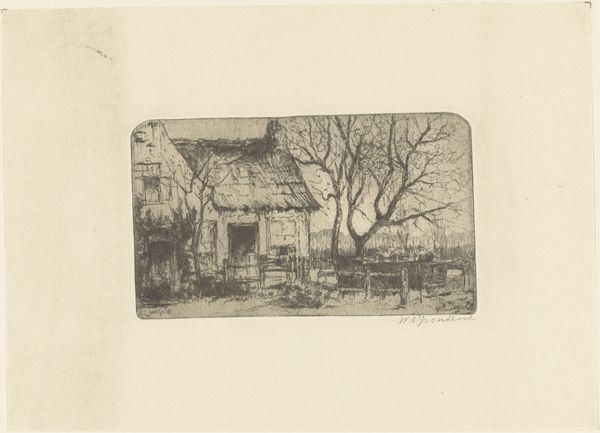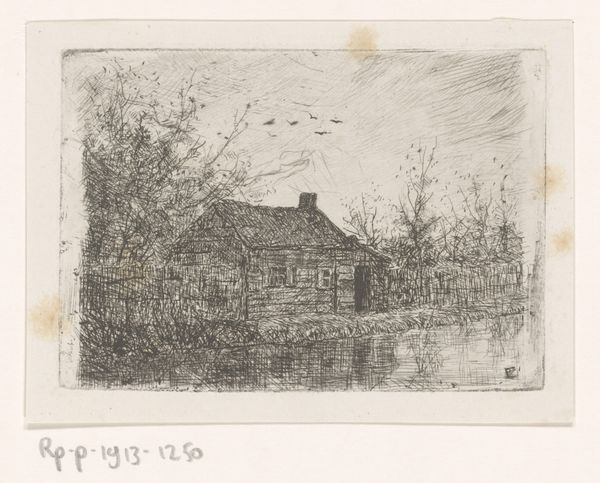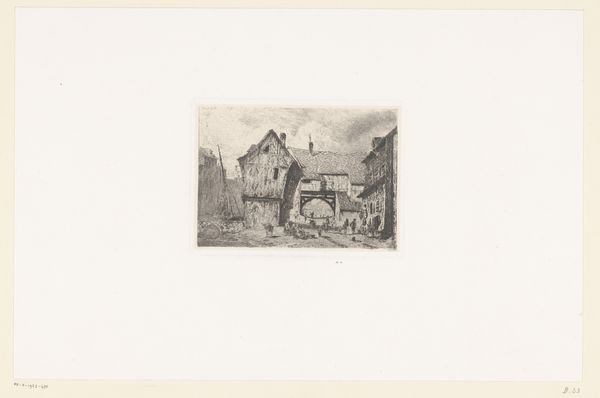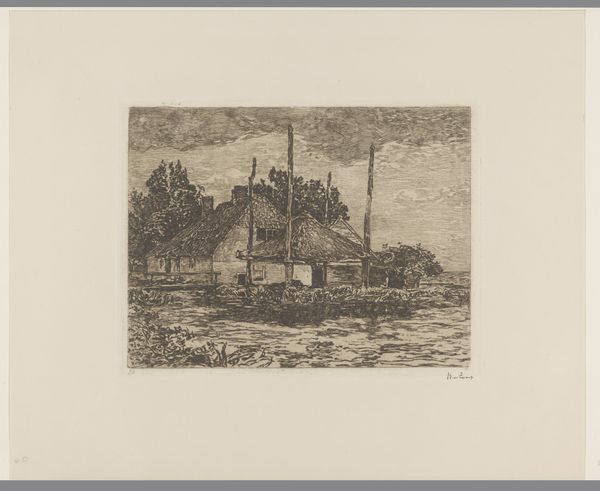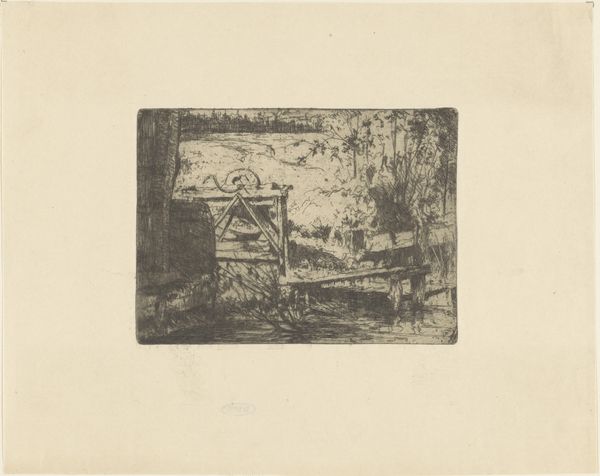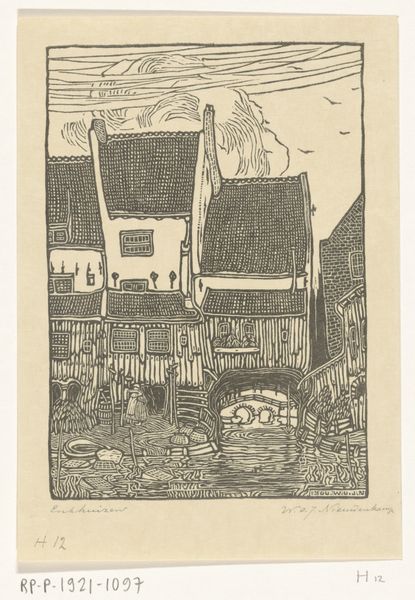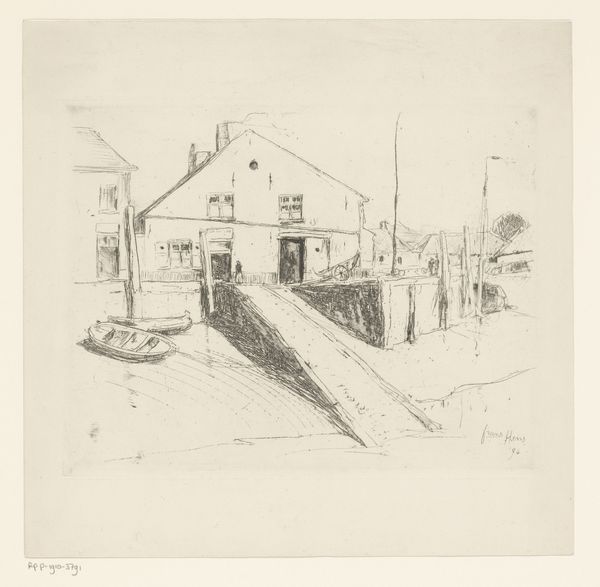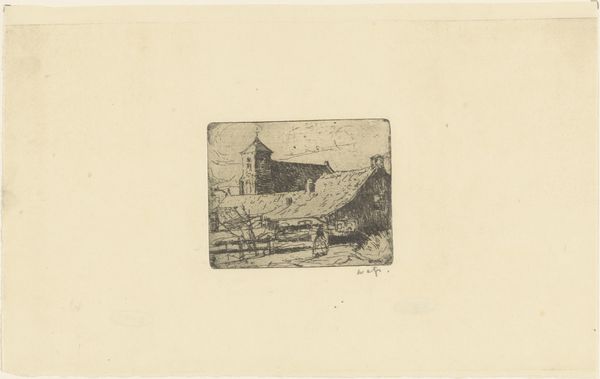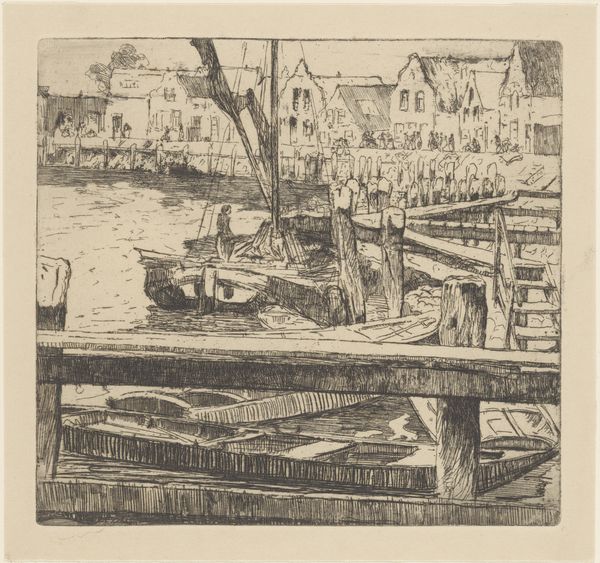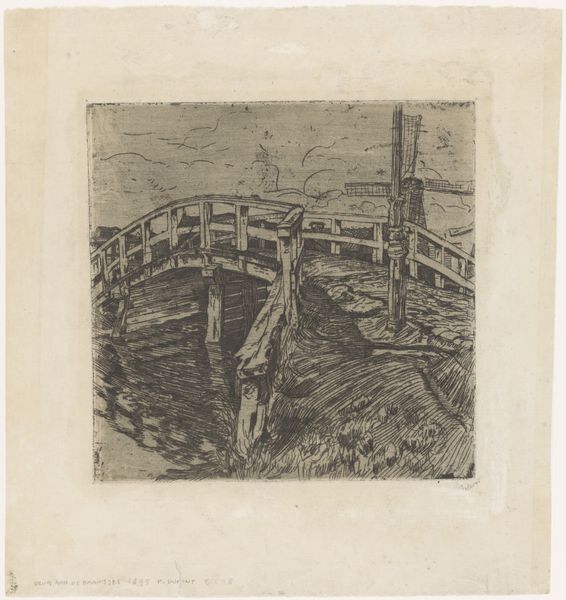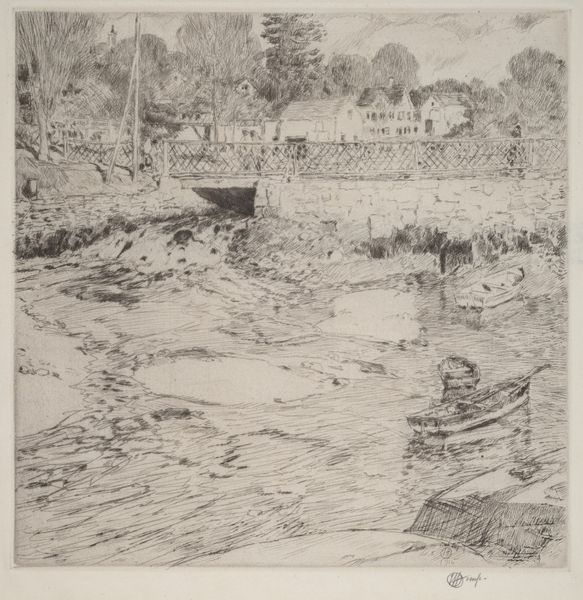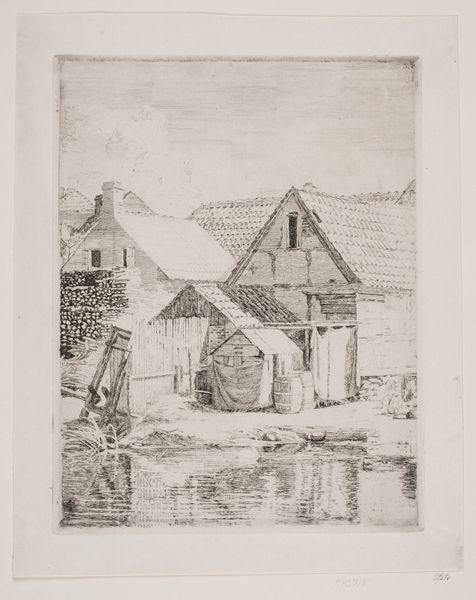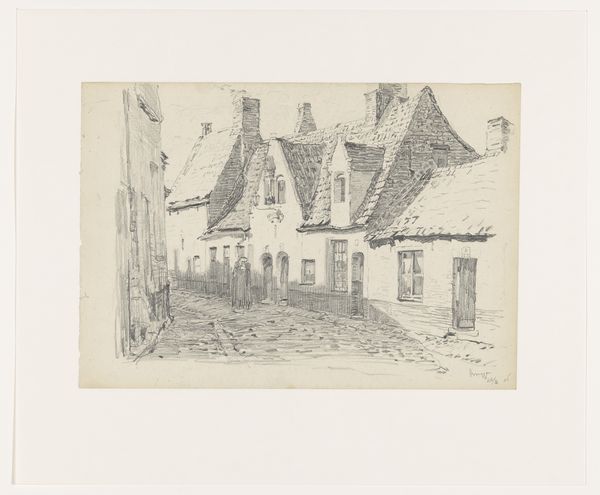
drawing, print, etching
#
drawing
# print
#
etching
#
landscape
#
cityscape
Dimensions: height 88 mm, width 100 mm
Copyright: Rijks Museum: Open Domain
Editor: This is "Twee huizen op een heuvel" - "Two houses on a hill" by Maurits van der Valk, made sometime between 1867 and 1922. It's an etching, a drawing and a print, currently housed here at the Rijksmuseum. There’s a worn, almost fairytale quality to these buildings depicted, even though it feels very grounded. What do you see in this piece? Curator: I see echoes of time, etched not just in the lines of the work, but in the very subject it portrays. Notice the way the lines defining the stone seem to crumble, how the composition guides your eye through a landscape pregnant with history. It is more than just a cityscape, wouldn't you agree? Editor: Definitely. It's as though the stones themselves have stories to tell. So, how do you mean? Curator: This print uses architectural imagery not simply to document a place but to explore ideas about memory, permanence, and perhaps even decay. Consider the cultural symbolism of a house – a foundation, shelter, and lineage – all potentially fragile, weathering over time like this stone. Does this idea resonate for you? Editor: I guess it does. Like, are we looking at what's been abandoned? Curator: Perhaps abandoned or, more poignantly, transformed. Each chipped stone, each crooked line whispers of human interaction, use, adaptation. The beauty isn't merely in the houses but in the accumulated history they embody. Van der Valk is using them as vessels, really. Editor: It’s made me think of buildings in a totally different light, seeing them almost like faces marked by life. Curator: Indeed! Visual symbols are how cultural memories persist, aren't they? A testament to continuity within change. Editor: I’m going to spend more time considering how the old becomes beautiful in art.
Comments
No comments
Be the first to comment and join the conversation on the ultimate creative platform.
